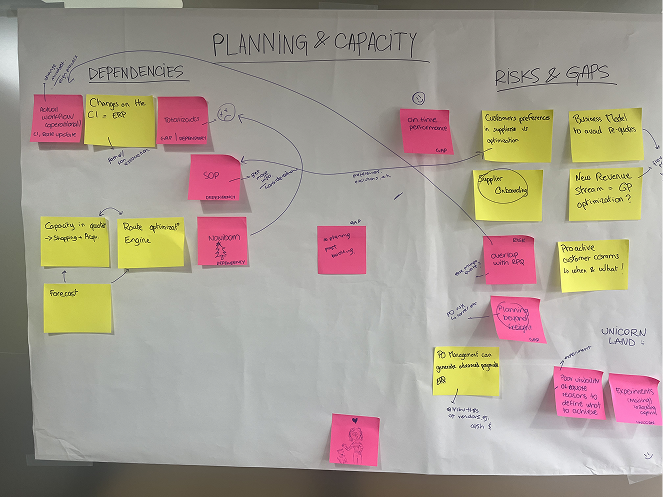From the journey to the agile team
Structure Product, Design, and Technology around the real customer journey, organizing agile teams that support each critical stage of the experience to scale value, impact, and connection with our customers.

Summary version
We redesigned the entire customer journey and structured Product, Design, and Technology into squads, chapters, and guilds. This created focused, agile teams aligned with the real customer experience. The result: greater impact, greater speed, and greater value.
* Some figures and data have been adapted for illustrative purposes to protect strategic and confidential information.
Understanding that designing a product is designing a journey
When we at Nowports set out to improve our customers' experience in digital logistics, we understood one key point: we couldn't think of the platform as a series of separate functionalities.
We had to think of it as a complete journey . A value stream that begins long before the first quote and continues long after delivery.
It wasn't enough to map it out. We had to structure our teams to support and empower every step of the journey.
The initial diagnosis: functional teams, fragmented experiences
Before this change, our teams were primarily organized by function:
-
Product by business lines.
-
Feature-focused design.
-
Technology by technical platforms.
That worked… until it didn't. As we grew up, we realized that:
-
There were gaps in the experience between critical customer stages.
-
Teams lost visibility into the impact of their work on the entire journey.
-
It was difficult to align goals, priorities and metrics.
We needed to move from functional structures to structures focused on customer experience .

Redefining the journey: every step counts
The first step was to design Nowports' complete Customer Journey from scratch:
-
We identify all critical moments: awareness, quoting, cargo movement, support, post-delivery, etc.
-
For each stage, we define:
-
What the client experiences.
-
What do you need?
-
What indicators can we measure?
-
Which internal teams should be involved.
-
This work not only highlighted opportunities for improvement, but also allowed us to create a living map of the experience—a blueprint we would use as a guide to reorganize everything.

How do we put it into practice? Inspired by Spotify
To articulate all of this, we adopted the Spotify-inspired Squads, Chapters, and Guilds model, tailored to our logistical and digital needs.
Squads: mini startups focused on journey moments
Each Squad is an autonomous, cross-functional team focused on a key stage or moment in the journey. It consists of a Product Manager, a Product Designer, a Tech Lead, and the necessary developers.
For example:
-
A Squad specialized in customer onboarding .
-
Another in movement management and shipment tracking .
-
Another in billing and post-boarding support .
Each Squad works in an agile manner, with clear metrics of impact on the client.
Guilds are more informal spaces that cross Squads and Chapters.
They bring together people interested in common topics, such as:
Accessibility.
Mobile performance.
Research Ops.
Internationalization of experience.
They are places to share knowledge, innovate, and maintain lively strategic conversations.
Chapters: Maintaining Excellence in Roles
Chapters group people with the same role, but in different Squads (for example: all Product Designers, all PMs, etc.).
They serve to share good practices, improve skills, and maintain standards of quality and consistency.
The leader of each Chapter (Chapter Lead) is responsible for developing talent and ensuring the technical evolution of their discipline.
Guilds: cross-cutting communities of interest

How we organize Product, Design and Technology around the customer
-
Each Squad has representation from Product , Design and Technology from the beginning.
-
Design Ops and User Research work cross-functionally, supporting the Squads in processes, research, and decision-making frameworks.
-
Each Squad's priorities are defined by looking at its impact on the Customer Journey , not just internal metrics.
In summary :
We organize teams to support the client every step of the way, not to accommodate our internal structure.


The results: more focus, more impact
Since the implementation of this model:
-
+30% increase in speed for critical functional releases.
-
+25% improvement in NPS for onboarding and shipment management.
-
-20% reduction in rework due to poorly prioritized or disconnected solutions.
-
Greater internal clarity: everyone understands how their work impacts the end customer.
And most importantly: today, we design and build with a clear understanding of who we’re doing it for — and why — at every stage.

Designing structures is designing experiences
Organizing teams based on the customer journey forced us to think differently.
It's no longer just about delivering features: it's about designing complete, coherent, and scalable experiences.
Because in logistics, as in any industry, what really moves everything isn't the cargo: it's the experiences.

